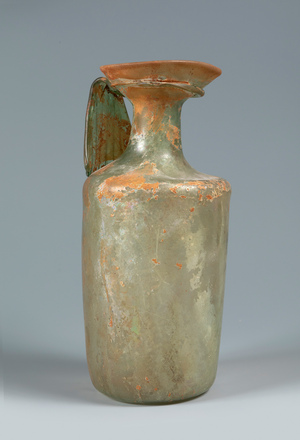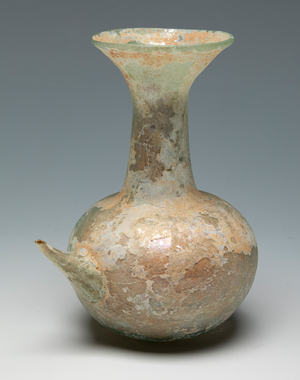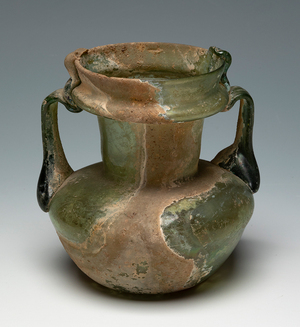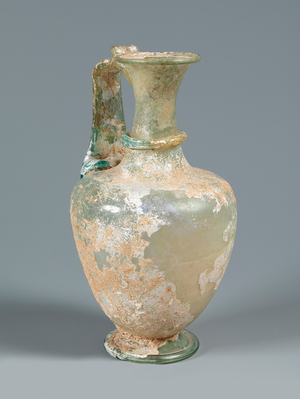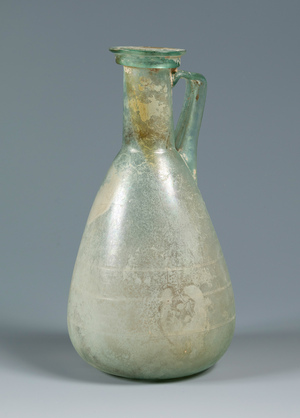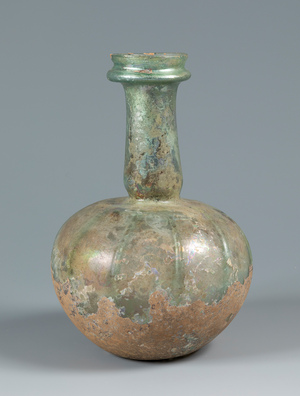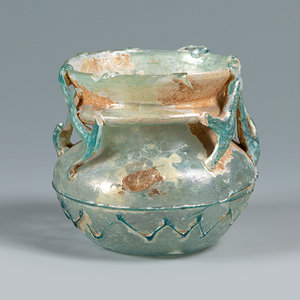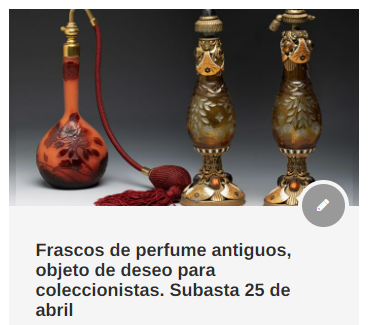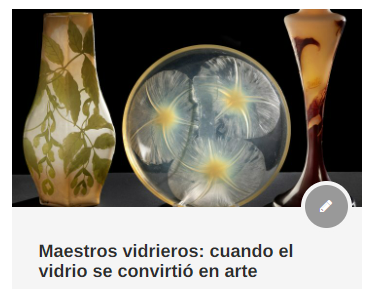Treasures of an Empire: Important Roman Glass Collection
How can we understand the value of a piece that is nearly two thousand years old? Today we are guided by its state of conservation, the purity and finesse of its finishes and, of course, by its origin. However, there remains a fundamental element to appreciate the art of Roman glass and for that we would have to think as a true Roman citizen would have done. Seneca tells us a perfect story to understand it.
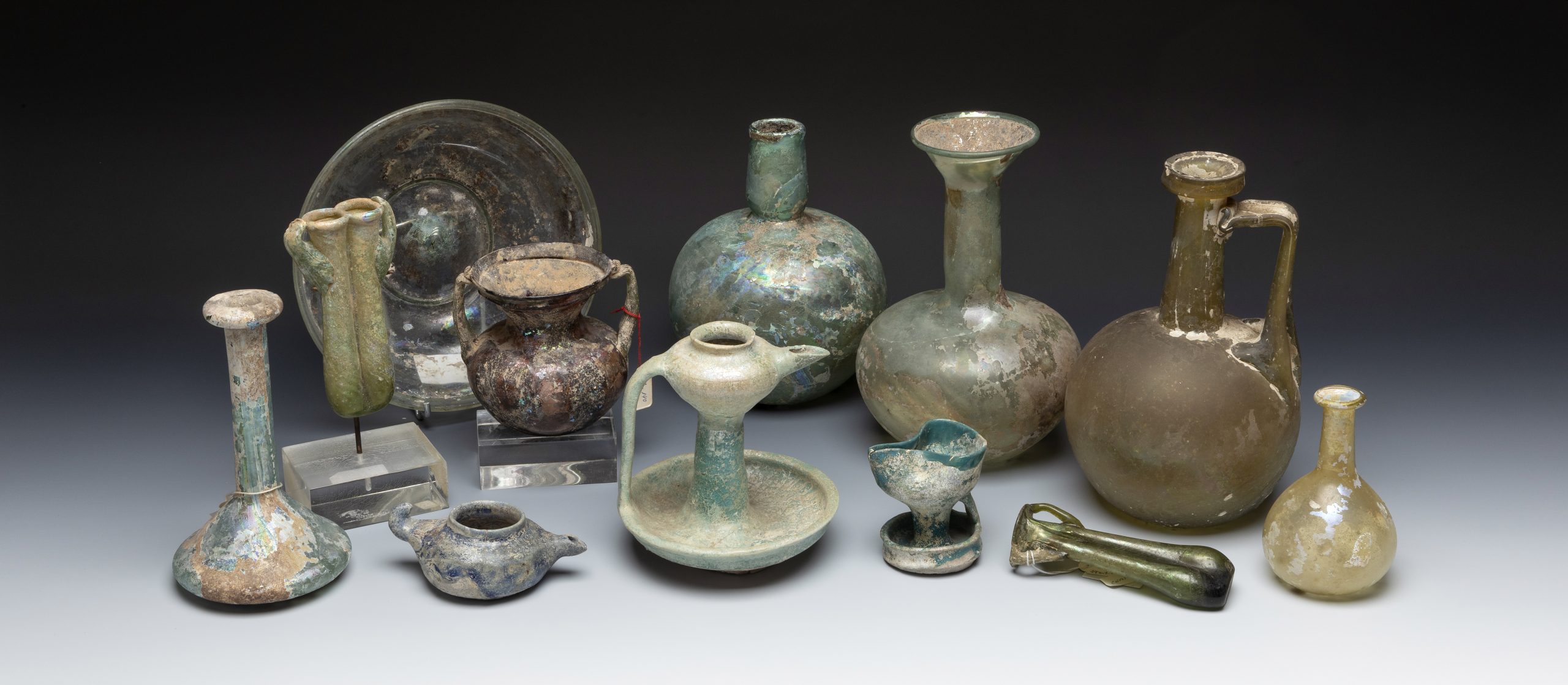
The wealthy banker known for his luxuries and extravagance, Vedius Pollio, gave an opulent banquet attended by the Emperor Augustus himself. Among the wonders that the guests could enjoy were, among others, a very fine crystal tableware from which they drank Falerno wine and, as they used to say at the time, it seemed that the fruits floated from the hands of the servants of the translucent What were the containers? One of the house slaves had the misfortune of precipitating a glass on the floor, leaving it shattered. The host without any hint of mercy condemned him in front of the attendees to die devoured by the moray eels from his pond. The emperor wanted to avoid the event and ended up teaching Pollio himself a lesson. After reprimanding him for his disproportionate measure, Augusto urged all the servants to throw all the crockery on the floor with the promise of no reprisal. In this way, the banker was left without his precious treasure and with the ridicule of all the attendees.
The story seems an exaggeration, but it highlights the high economic cost and the appreciation that was given to glass manufactures. The life of a servant, for that of a drink. Fortunately, at this time we can appreciate these wonders with a demanding but less aggressive criterion. The glass pieces, as we verified, were luxury goods in formats that are usually discreet and with a special interest in the finishes.
The collection that Setdart auctions comes from the Hotel Cambón in Paris and from an old Spanish private collection and is a unique testimony of the art of glass in Roman times. Accustomed to seeing pieces such as ointments or lachrymatory bottles on the market, which were more usual and common, the containers in the collection stand out for their rarity and their exceptional state of preservation. The dimensions of the objects are a detail that influences that they have reached us. The pieces of larger formats or with complex decorations such as handles or borders imply greater difficulty in terms of their survival. Let us bear in mind that the blowing of glass in the imperial era, with the techniques that were available, implied an extreme level of precision and thoroughness. Added to this would be the trade of those pieces that were distributed to all corners of the empire and later by their owners.
Although the typologies of the pieces that we present clearly allude to their domestic use, they are much more than that. The next two lots are clearly jars that must have been used to pour some kind of liquid, perhaps a drink or oil. Today we may not out of habit appreciate the effect it would have on a Roman to see the contents of one of these jars clearly through it. The usual custom of using opaque ceramic tableware made a fact like this a true luxury. To give a visible example; the Romans mixed their wine, much more intense than our current one, with water and sometimes with spices, honey and even flowers. Seeing the delicacy of all the elements melt into one of these jars would have been a privilege available to very few.
The small opening through the stylized neck of the first batch may have contained some precious liquid. We can imagine what the sensual movement and color of some perfume or essence would look like inside. An enigmatic container due to its quality, state of conservation and typology is the other Roman container. This container with a wider mouth must have kept a different kind of tableware inside. The small and delicate glass objects were included in the trousseau of the rich ladies. The bowls, glasses and other pieces were used to contain the materials that surround the world of makeup: khol imported from Egypt to paint around the eyes, lotions based on exotic flowers and of course powders extracted from minerals and gems. A sophisticated world that has miraculously reached us intact, thus allowing us to know a little better the daily glories of the greatest empire of antiquity.


